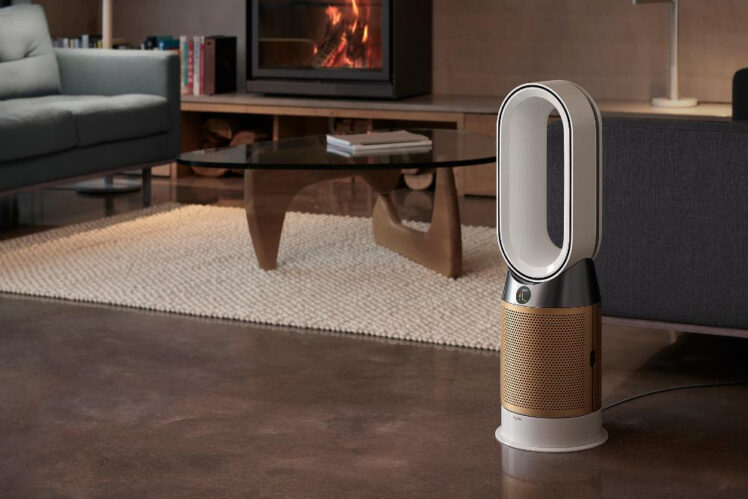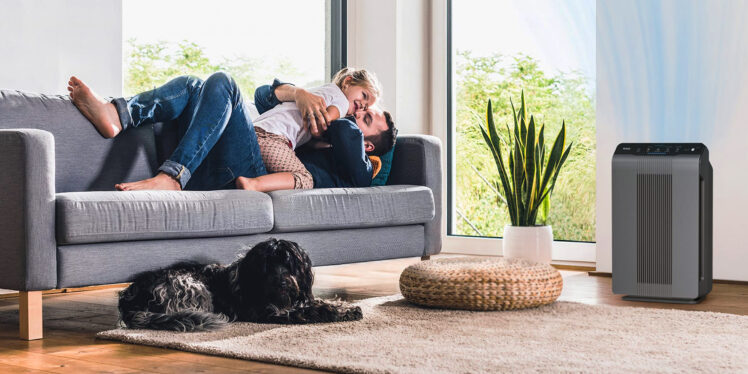Your house should be a haven for you. However, pollen, dust, and other airborne allergens can swiftly degrade your home paradise’s air quality. While air filters can assist, most of them aren’t fine enough to trap irritants like mold spores and dust, which induce allergy flare-ups and lower air quality. Homeowners should take it a step further and invest in an air purification system to improve the quality of their indoor air.
You should be aware, however, that not all air purifiers are the same. Air purifiers come in a variety of sizes and shapes; some can filter out bigger particles, while others trap teeny-tiny particles.
We’ll explain what air purifiers are and how to choose the best one for your house in the sections below.
Contents
What Are Air Purifiers and What Do They Do?

Source: businesswire.com
Air purifiers are used to clean the air. They can be made as small stand-alone devices or larger ones that connect to your HVAC system. High heat, exhaust systems, UV light, ionic technology, or HEPA filters are used to remove dust, volatile organic compounds, dander, mold spores, dust mites, smoke, and pollen from the air. You can find a reliable air purifier manufacturer like LakeAir or hisoair.com
1. HEPA (High-Efficiency Particulate Air) Technology Purifiers
HEPA stands for High-Efficiency Particulate Air, and it’s a particle-filtering technology that’s been around for a long time. HEPA filters like the ones from HisoMedical trap at least 99.97 percent of all particles larger than 0.3 microns to meet the criteria. Chemicals, bacteria, and viruses captured in a HEPA filter cannot be seen since the human eye can only see particles larger than 10 microns. HEPA filters help to keep the atmosphere more sanitary by trapping mold and germs. Furthermore, no ozone or other dangerous byproducts are produced by this sort of air purifier.
Air purifiers with HEPA filters are the most effective at catching airborne particles, but they don’t remove odors, chemicals, or gases. As a result, most HEPA air purifiers include some activated carbon-based material to absorb smells and chemicals that the HEPA filter does not capture.
2. Activated Carbon Technology Purifiers

Source: hiconsumption.com
Activated carbon is a type of carbon that has been processed to make it exceptionally porous and absorbent.
People with Multiple Chemical Sensitivity (MCS) benefit from air purifiers with activated carbon filters because they absorb formaldehyde, which is present in carpet, wood paneling, and upholstery. Toxins found in household cleaning products are removed, making the environment much more breathable, which is especially beneficial to asthmatics, newborns, children, and the elderly.
Carbon air filters are effective in reducing contamination in our rooms, but they are ineffective at removing allergies and other airborne particles. They also have limits in terms of removing impurities that aren’t driven through the filter and are far away.
3. UV Purifiers
When it comes to sunscreen, you’ve probably heard the phrase “UVA and UVB protection.” This is due to the fact that UV light from the sun breaks the DNA and RNA within your skin cells, increasing your chances of developing skin cancer. UV purifiers, on the other hand, operate with bacteria in the same way.
UV purifiers start by sucking air into the device. UV purifiers next expose the air to a UV lamp, which emits UV-C radiation in most cases. UV light breaks down the chemical connections created between DNA molecules, rendering viruses dormant and killing bacteria and fungi through a process known as ultraviolet germicidal irradiation (UVGI).
Therefore, having UV purifiers at your home is imperative because it will help you and your family gain immense health benefits. UV Purifiers have become staple for every home considering we are living in a world where pollution plagues every global city and there is little to almost nothing humankind does to achieve net zero.
4. Ozone Generators

Source: infoplease.com
Ionizers and ozone generators work in a similar way, despite the fact that they produce slightly different molecules. They either produce ions or ozone, both of which are charged. Normal airborne particles have a neutral charge, so when they come into touch with ions or ozone, they gain a charge as well. Instead of floating through the air, they attach to the surfaces around the room.
The ozone in the air may irritate the lungs of some people, particularly those with respiratory problems. If you experience this issue, try using different filters.
5. Antibacterial and Germicidal Air Purifiers
Antibacterial and germicidal air purifiers are made up of methods and components that can eliminate allergens as well as germs that cause the flu or cold. UV light, sterilizing heat, and natural silver are some of the technologies and materials that are used to kill pathogens in your home’s air. As a result, antibacterial and germicidal filters aid in the prevention of strep throat, colds, and influenza, making your house a safer and healthier environment. These filters can be used alone or in conjunction with a HEPA filter.
Conclusion

Source: today.com
Air purifiers and air cleaners are the best approach to improve the quality of the air in your house. These devices, which are more advanced than conventional air filters, work tirelessly to remove pollutants and irritants from your home’s environment. Your allergy and asthma symptoms should improve as a result.
You can also relax a little more, knowing that dangerous particles will not be contaminating your home. Installing an air purifier has become the need of the hour, considering the atmosphere we live in is degrading and humans need to breathe in clean air to keep illnesses at bay.
Therefore, install an air purifier today! You can choose from the various types available in the market based on your needs and requirements. You can also go through the insights mentioned above to make an informed choice. You must choose a purifier that is suitable for your home since there are so many models and types of purifiers that dominate the market.
